Buchenwald concentration camp
While going to Germany last year I carried a strong desire to visit at least one Nazi concentration camp. I was told by many people that the Germans might be secretive about the concentration camps and Nazi era atrocities. People on the streets or in private conversation hardly speak of Hitler. However, to the foreign tourist, the German openness at the sites of all the Nazi memorials appears quite stunning. Beside Buchenwald, the museums in Nuremberg and Berlin (Territories of terror) are awe inspiring. We zeroed in on Buchenwald because that was arguably the largest one. It is also close to Goettingen. The railway station nearest to Buchenwald is Weimar- a city that was the abode of polymath, philosopher, statesman and poet Wolfgang von Goethe (1749-1832) and also of poet and playwright Friedrich Schiller (1759-1805). During the days of Weimar Republic (1918-1933), it also became the hub of German political power post WW-I. In the Hitler era, the infamous Buchenwald concentration camp was established in 1937 primarily to lodge political opponents, Jews and other targeted groups like the homosexuals and gypsies. Before starting with describing our trip, I would like to warn the readers that this article has a few disturbing (yet unfortunately true) images from the camp.

Figure 1. Route map from Goettingen to Weimar with map of the Buchenwald concentration camp (inset) and the main gate of the camp.
On the 4th of September, 2022, we boarded a morning train for about a three-hour long journey from Goettingen to reach Weimar. From the station the camp is a short ride of about 20 minutes. The bus dropped us at the parking space in front of the information centre which provides an audio guide for the 60 odd visiting spots inside the remains of the camp. Like most of the Nazi era remains, in this camp too entry is free. Crossing some office and residential premises we reached the main gate carrying the inscription ‘Jedem das sein’ (To each his own).
The camp gate complex (picture below) has two wings. Looked from outside, the right wing was used by the SS guards for their offices and the left wing contained solitary confinement cells. The cell closest to the gate was earmarked for the prisoner to be executed shortly.
The biggest disappointment is that no inmate barrack could be preserved in this camp although the crematorium with the post-mortem chamber and the store building (Depot) still exist. Inside the Depot there is a huge exhibition of documents, photographs, equipment, dresses and artifacts belonging to the Nazi era.
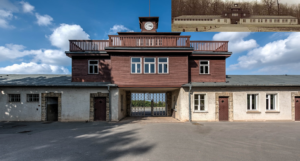
Figure 2. The camp gate as seen from outside and inside (inset). The wing for SS offices has large windows, and the one with the confinement cells has smaller openings.
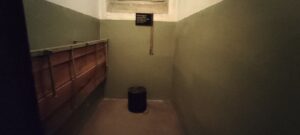
Figure 3. Inside view of a confinement cell. These might be places where the principle of interrogation till confession used to be practiced.
It is hardly any surprise that Hitler’s party, which routinely used forced labour trampling on workers’ rights and practised forced labour without any trace of compassion, camouflaged their real intent behind its name, The National Socialist German Workers’ Party (National sozialistische Deutsche Arbeiter partei- NSDAP) to corner the sympathy of the masses. The party used all means to project itself as the workers’ representative. The inscription at the entrance of Auschwitcz (Poland) and Dachau (Germany) concentration camp says, ‘Work sets you free’ (Arbeit Macht Frei).

Figure 4. Another inscription on the gate explains how the Nazis could perpetrate so much atrocity upon fellow human beings without any feeling of guilt– ‘Recht oder Unrecht – Mein Vaterland’ (Right or wrong – my fatherland). Even ordinary people who carry that kind of faith become hellish demons to those who, in their limited understanding, are inimical to their land of birth. That is probably the reason why Rabindranath Tagore unequivocally placed humanism over nationalism.

Figure 5. This is where the barracks stood. Unfortunately, all of them have been destroyed.

Figure 6. The Depot is the most well-preserved multi-story building within the fenced camp area. This was the largest building in the camp that was used to store the belongings of the inmates. Now, it has been transformed into a very elaborate museum for the history of the Buchenwald camp and the Nazi era. In the ground floor, one can also watch a running video on Nazi atrocities.

Figure 7. This is a good summary of Buchenwald. 3.5 km of electrified fencing. Cumulative 277800 total no. of inmates of age range 2-86 years from 50 countries. 56000 dead. The absence of gas chambers was compensated with executions through hanging, shooting, starvation, exhaustion, untreated or induced diseases.
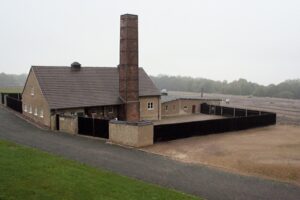
Figure 8. The crematorium of Buchenwald was the site of mass hanging (simultaneously 48 persons at one point in time).
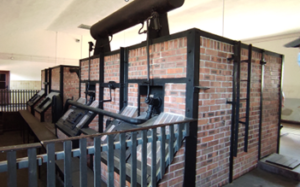

Figure 9a and b. Crematorium furnaces-front and back. The crematorium incineration facilities which could burn hundreds of dead bodies in a day, were managed by hardened criminals.
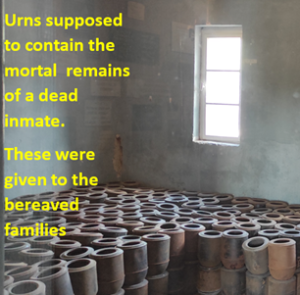
Figure 10. Scary containers. These are the urns in which the mortal remains of the deceased inmates used to be handed over to the bereaved families.

Figure 11 a and b. Dead bodies used to lie lay in piles in the crematorium courtyard or arrive in trailers or baskets in the same fashion. The demand to cremate hundreds of bodies must have led to mass cremation and inevitable mixing up. Therefore, whose ashes a particular urn contained, always remained a matter of doubt.
Figure 12. Above is the photo of a galvanized wooden case in which the murdered prisoners used to be brought to the crematorium. More than 8000 were executed by shooting alone. There have been recorded instances where men, still alive, have been sent to the crematorium with a heap of dead bodies. Once signs of life were detected, the SS guards were swift to extinguish them through a variety of means.

Figure 13. Dissection (post-mortem) facility inside the crematorium. This was the place to extract possible gold teeth coverings. One primary objective was to prepare fictitious reports on the cause of the deaths which in most cases were murders of different varieties.

Figure 14. The shooting device (reconstructed). a and b: Front and lateral view of the fake height measuring scale as it appeared to the prisoner. c: A tiny hidden chamber behind the scale where the shooter used to stand. He would shoot through the slit at neck height which is otherwise covered by the brown wooden slab (moved right here). Looking at the eye of the victim just before shooting that person gives an eerie feeling capable of taking away the night’s sleep. In this arrangement the shooter could avoid that experience.
That the concentration camps were arenas of horror, murder etc is common knowledge. Actually, they served three principal purposes.
I. Free labour for construction, armament manufacture and more
The inmate’s routine was to get up at 4:30 AM, get a little food and then spend till 7 AM standing for the roll call and walking to the places of work, i.e., arms factory, building roads or railway lines. The work day lasted till 5:30 PM. One can guess the cruelty of the system by an inmate’s account of a day (17th Nov, 1943). Something was missing. The inmates were called to the muster ground (roll call space) and asked to stand throughout the day. They were told that there’d be no food for eight days. The work routine continued in the normal pattern. However, the lost thing wasn’t found till the fourth day and the order was withdrawn due to its inapplicability.

Figure 15. Memories of roll call at the Buchenwald

Figure 16. Using women to make grenades for war.
Figure 17: Collage of testimonies on the camp brothel carrying another name.

![]()


II. Terrorising and extermination of opponents of Nazi party or prisoners of war
Every morning, the offenders were flogged and tortured before the roll call gathering in the muster ground. In a great number of cases, the hangings were done in full public view. The camp had a pack of blood hounds trained to discipline the inmates on their way to and from work. The SS built a blood hound breeding facility too.

Figure 18. Murder as a public spectacle.
One ingenuous execution device was the height measuring scale shown in Fig 14. The prisoners used to be taken inside the facility under the ruse of measuring their height, weight etc. The height measuring machine had a slit like opening. Behind that there was a small chamber where an SS gunman used to stand and fire a bullet into the neck.
There was no gas chamber at Buchenwald. However, the average yearly execution in Buchenwald through its eight years under the Nazis exceeded 1000 heads. Many more died of starvation and disease.
III. Medical research using the prisoners without their consent.
This is the least known. The Nazi doctors used to inject viruses and germs into healthy bodies to study its effect. To examine the limits of endurance for a human body, selected healthy inmates were subjected to extreme conditions of temperature, pressure etc. Many died during such experiments. To conceal the real reasons, Nazi doctors routinely produced fake post-mortem reports in the dissection lab attached to the crematorium. The doctors took particular interest in medical examination of twins (especially children). They also tried to use fine measurement of body parts as differentiator between the super race (Germans) and the inferior ones.
More from the museum (Depot):
Burning books
The Nazis declared some traits as ‘un-German’ harming and weakening the race. Therefore, they intermittently launched book burning campaigns, the most infamous among them took place on 10th of May, 1933. The Nazi student union and professors joined hand in burning books of all Jewish authors (Sigmund Freud, Einstein among them). Half- Jewish, communist literature or those written by liberals or pacifists were also targeted. In a number of university towns, Nazi followers among the students and faculty took out torch-lit processions as a part of cultural cleansing of the “un-German” spirit. In the town of Goettingen where we stayed, it happened in the courtyard of a church. Like all who foster extreme ideas and profess violent solutions, the Nazis too were bitterly inimical to those who did not want to close their minds. Therefore, they jailed and burned books written by people known for their liberal views and love for peace (pacifists).
Boycotting Communities
In their firm belief that the solution of all problems lie in elimination of Jews, the Nazis called for boycotting goods sold by the Jews. Even accepting professional services from Jewish professionals like doctors became risky even life threatening for the common Germans.
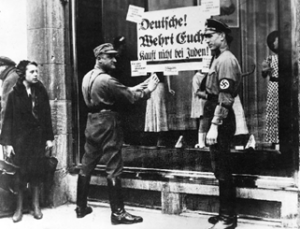
Figure 19. German police putting ‘Germans defend yourselves! Do not buy from the Jews’ (Deutsche! Wehrt euch! Kauft nicht bei Juden) notice on a Jewish shop window. For easy identification, the Jews were also forced to display yellow stars on their dresses. Native Germans could not be counted as Germans, if their religion was Judaism.
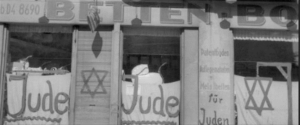
Figure 20. Marking on Jewish shop windows

Figure 21. The yellow star and a Jewish couple wearing it
Disciplining love
The Nazi ideology was very strict on the purity of the German race. Family was supreme. The thought was, the best and the virtuous among the women would bear many children and look after the household. The sign of anything sullying this pure, spotless scenario was dealt with heavy hands. The prisoners deployed in civilian areas for jobs like constructing roads, railways or buildings often came in touch with German civilians and fell in love. If reported, the prisoner was tortured much beyond the routine cruelty and starvation frequently leading to death. The German woman involved was paraded on the street with her head shaven (tonsured). There were parades for the men too. We saw a photo of such a boy with a placard saying, “I tried to pollute a race.”, hung from his neck. The 1935 Law for the Protection of German Blood and Honour stripped the Jews of their citizenship and banned marriage between Jews and non-Jews.
Hindsight from Buchenwald
Hitler wanted progress through elimination of the Jews. His followers torched books, houses and properties. The Jews survived, became strong and after he perished, claimed something they did not have, i.e., a state of their own, Israel. The Nazis either didn’t read what the American poet and philosopher Ralph Waldo Emerson said half a century ago or chose to ignore it. “Every burned book or house enlightens the world; every suppressed or expunged word reverberates through the earth from side to side.”
The Nazis thought development would come through exclusivity – not only the Jews, all other races, the Poles, the Slavs, the British, the French, the Africans or Asians should be subservient to the super-race, Germans. Efforts to establish that fictional status led to the death of seven to eight crore men, women and children directly in war or due to war related diseases. That plan of conflict failed. Later, Germany regained its position as Europe’s biggest economy following the opposite, i.e., the path of co-operation with those whom the Nazis thought inferior.
Visiting Buchenwald leaves one wondering about the captivating power of imaginary easy solutions. Obsessed to confirm the planted ideas and to see the dawn of heavenly bliss, the ordinary citizens get obsessed. Like the proverbial three monkeys, they stop seeing, speaking or listening anything that goes against that fixation. Removing all hurdles towards that goal- conspiracy, even killing of innocent children looks like a small price to pay. The Nazis wanted to coerce every other race into servitude. Alas! Extreme ideas do not last long. ‘The best way’, as Amitav Ghosh wrote in another context, ‘is to live in the world, not on top of it’.
2nd April, 2023 Arijit Chaudhuri
About the author

Arijit Chaudhuri, located in Navi Mumbai, petroleum geologist by profession. Also interested in issues concerning pollution, climate change and fast depleting groundwater reserves.Travelling, reading, writing articles, composing rhymes and recitation are his hobbies.

That’s a hell of a travelogue for sure Dada. Amazed how you could travel back in time to see through the artifacts and ruins on display. Congratulations for the excellent note.
An excellent note on a Nazi concentration camp and it’s heart wrenching tales viewed through the eyes of a sensitive soul.It’s painful to have gone though the narratives.I could imagine how unbearable it had been for you to have a look in person and revisit the infamous facilities of torture and deprivation of human beings, at the hands of another group of humans.A commendable and a bold decision you made I must say to have included this visit in your itinerary. Nice and enriching to have gone through.
Nicely and carefully drafted note. The last paragraph concludes the entire note so well.
Thank you for sharing.
You have taken me time to pre WW-II. The documentation is perfect & well supported by your lucid pictures. The narrative needs to be complimented as it is sensitive and kindles the readers emotions. Congratulations and best Wishes. Keep writing your travel logs. It has brought out a new facet of a well known Exploration Geologist.
Excellent commentary. You guided us through it.